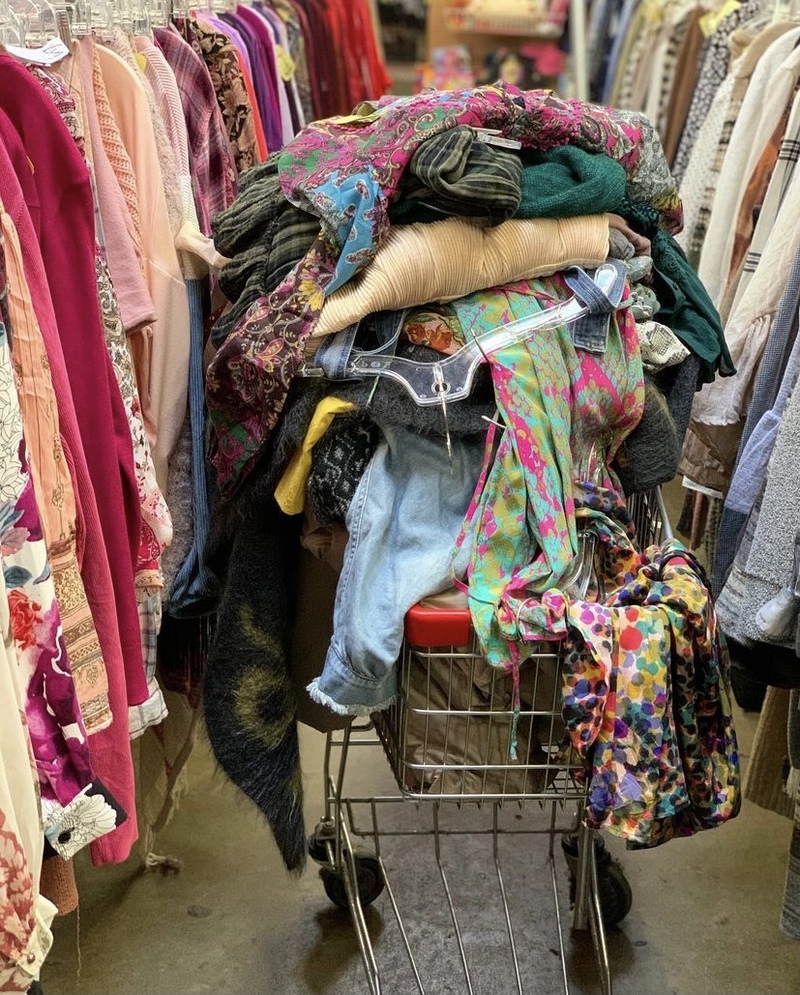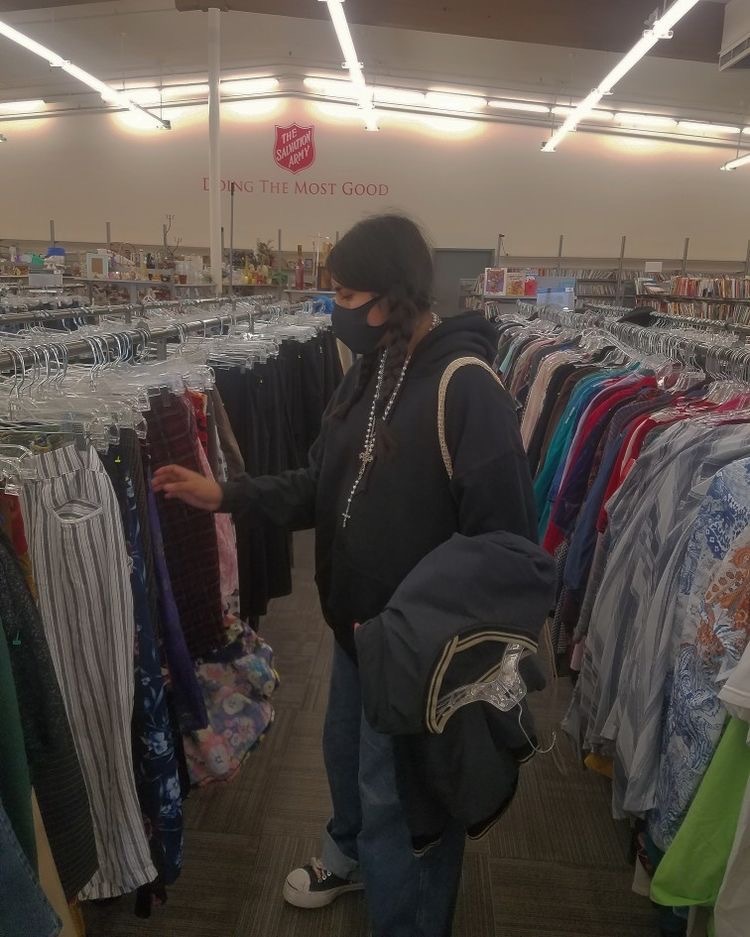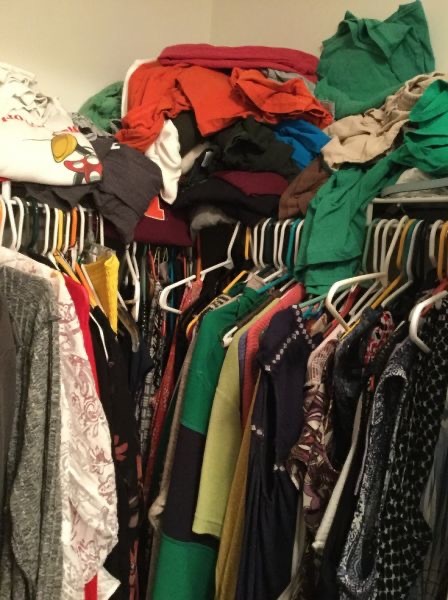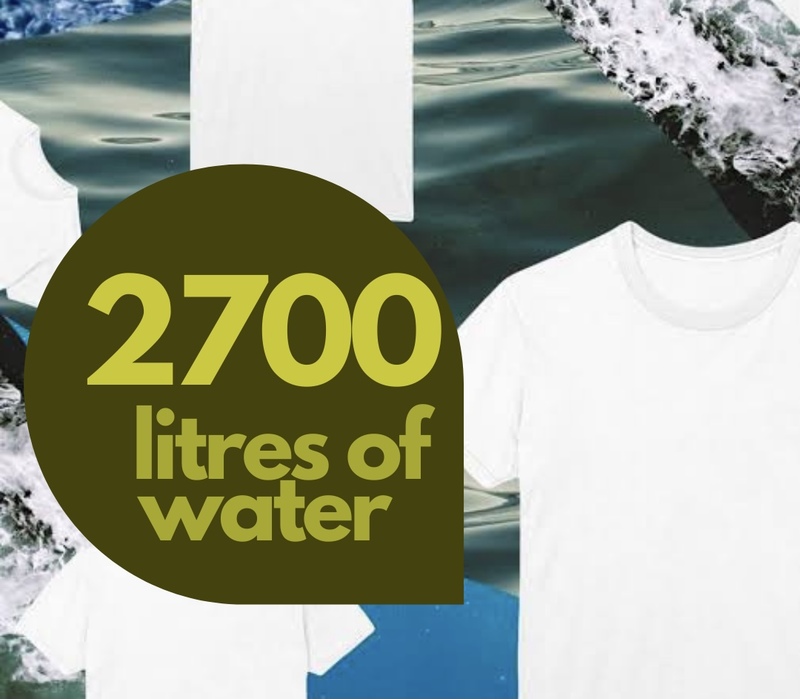[ad_1]
A revolution has been in the making for quite a bit of time now, one that has finally forced us to review our decisions and lifestyle. The long-awaited change is a result of increased popularity for sustainable alternatives and can only be credited to a new generation of global consumers and maybe even the global pandemic.
Though it has now become ‘trendy’ to care about the environment and to shop consciously, trends never last, so what will be the outcome of this one? In this article, we will dive into the history behind the change and growing craze for thrifting as a solution, and the pros and cons that arose as a result of this cultural shift.
The Fall of Fast Fashion
Let’s rewind a couple of years when ethical consumption and sustainability were at the back of our heads, and heading out for a shopping spree to Forever21, GAP or any other similar outlet was the norm. This was the peak of fast fashion, a term used loosely to describe the billion-dollar industry that mass-produced garments at low costs to sell them for high-profit margins. Alas, behind these mysteriously cheap prices is a streak of unethical practices and scandals that were covered up for the longest time.
As journalists and environmental activists started investigating the behind-the-scene process of how our favorite brands managed to generate their nice pieces at surprisingly ‘affordable’ prices, the real story finally began to emerge. From unsafe working conditions in factories in developing nations to the insane amount of chemicals or water carelessly disposed of and unnecessarily huge contributions to landfills, the stories have slowly begun to pile up.
The Huge Cost
View this post on Instagram
The Landfill Problem
Large retail brands have gradually normalized consumers to think that paying as little as $5 is fair for a single t-shirt. And, although this attractive price might seem like a great deal, customers are essentially paying for poor quality garments with short life spans.
Simultaneously, this low price decreases the value of the pieces in the eyes of the buyer which has only helped to take them for granted and more easily disposable. Changing trends and styles have further aggravated this issue as an increasing number of people buy new clothing to stay in fashion. More often than not these discarded fabrics make their way to overflowing landfills safely tucked away in developing countries.
Another overlooked issue is when brands dump excess pieces, which are in high demand, in landfills to create a shortage which results in obnoxiously high prices. With profit as their main objective, they are ready to create long-term pollution for a short-lived craze.
After all, they believe staying ‘in trend’ is more important than the environment.
View this post on Instagram
Unsafe Working Conditions
Ever thought of how brands manage to stay in business with such low prices? Well, to minimize the cost of production the burden falls on the garment factories which are usually located in developing nations like Bangladesh and Myanmar where laws and authorities are much more relaxed.
Unsafe working conditions are nothing new to these factory workers; poor lighting, dangerous gases, and fire hazards are the least of their concerns. In fact, after the 2013 Rapa Plaza tragedy in Bangladesh, which claimed 1,132 lives, a short viral moment followed with pledges for change, but soon everything went back to normal. Instead, for these workers, at the brink of absolute poverty and a monthly salary of $100, the greatest challenge is to keep on living.
The Toll on the Environment
Let it sink in.
It takes 2,700 liters of water to make just one t-shirt, which is enough water for one person to drink for 900 days —worldwildlife.org
Yes, that much water is wasted on a single t-shirt worn three to four times before its inevitable journey to a landfill. Now, try to do the impossible and imagine the scale at which the entire industry operates at. That overwhelming feeling is accurate.
Toxic chemicals like vibrant dyes, solvents, or machine oils are usually dumped into rivers or other water bodies to reduce costs. These chemicals then poison the entire ecosystem of aquatic creatures and plants, and thus, detrimentally damage their habitat. Moreover, microplastics from polyester contribute to approximately 30% of plastic pollution in the oceans. This is highly destructive and will most likely have a long-lasting impact on the environment.
Greenwashing
Greenwashing: a marketing strategy or a deceptive response from brands in an attempt to be seen as eco-conscious to consumers demanding change. The best way to recognize these dishonest practices is to spot hidden trade-offs, find reliable certification, and notice vague or misleading terminology. For example, the term “all-natural” can include arsenic or formaldehyde which although poisonous are still completely natural.
H&M’s Conscious Collection is one of the prime examples of greenwashing where the brand made exaggerated claims of positive ethical contributions in an attempt to distract customers from the ongoing mass production of fast fashion.
View this post on Instagram
How Did Thrifting Become the Solution?
Some call it a challenge, others have dubbed it as an extreme sport, however, thrifting is neither. Thrifting is the simple act of shopping in second-hand, charity, or thrift (used clothing) shops to buy worn clothes that are usually in sound condition and cheap or unusual. It’s an amazing way to re-wear/reuse clothing to get more use out of a piece before it ends up in a landfill.
Thrifting predates back to the 1920s but has only become popular in the last decade or so thanks to the rise of trends in media and a new generation of environmentally conscious consumers. As a result, new thrift shops, aside from Goodwill and Salvation Army, started popping up on the corners of avenues and streets stocked with old clothes or discarded inventory from retail shops.
The Many Benefits
Reduce Waste:
The best way to go green is by shopping at a local thrift store! Not only do we make use of the three Rs (reduce, reuse and recycle) but also decrease the energy and water used for packaging and distributing the new clothes. Thus, fashion pollution in the form of textile wastage dumped into landfills (which takes years to break down) can be significantly decreased.
Support the Local Community:
Shareholders of million-dollar retail brands will not profit if customers start shopping at small businesses like thrift shops, which are usually family-operated. In this way, consumers can give back to their local neighborhoods and play an active role in the livelihoods of the less fortunate, rather than increasing the bank balance of the rich. They can finally make a direct impact which can actually help make a difference!
Discover Your Style:
Gen Z came along and changed the game. Especially, when it came to expressing themselves and finding their style at no cost to the environment. Curating unique outfits and creating a one-of-a-kind wardrobe had never been this easy! With social media and other platforms advocating for reducing waste, thrifting was a good idea to keep up with trends and be in style without consuming fast fashion or contributing to waste.
High-Quality Items At Cheap Prices:
At a budget? Thrifting has got your back! Most items stocked were manufactured several years back and the quality is likely to be better than shopping at any of the fast-fashion brands. Simultaneously, the probability to get expensive items at bargain prices is very real since many thrift stores stock excess inventory from high-end stores. Thus, clothing is likely to survive long-time wear and provide value for money.
The Sad Drawbacks

Price Gorging:
After thrifting exploded into a huge trend, thrift stores quickly reacted by increasing prices to get greater margins of profit from new customers who were clearly willing to pay more. As a result, lower-income communities who depended on these stores experienced a tragic shift in their expenses. Reduced opportunities not only made their lives harder but also forced them to shop from fast fashion brands like Primark which further contributed to overflowing landfills.
Thrifting Hauls!
It’s very likely to come across those quirky, trendy, and satisfying thrifting hauls on social media platforms like Instagram, TikTok, or YouTube. Here, influencers and content creators brag about the treasures they discovered on yet another trip to the thrift store and then proceed to try on their finds in front of the camera. This is obnoxious. Not only do they never wear these clothes again, but also permanently destroy the chance for someone else to use them as well.
These ‘trend setters’ then influence their young following to go thrifting who then buy obscene amounts of clothing which are rarely appreciated and instead sit at the back of their closets.
The Gentrification of Thrifting:
Traditionally, only low-income communities would shop at thrift stores as it was an easy way to score great items at affordable prices. However, businesses quickly took advantage of this feature, especially when popularity around thrifting steadily grew, to create a huge market for the trendy youth. Depop and Poshmark emerged as the best platforms to “steal from the poor” as a growing number of people began to scrounge through bins at Goodwill and Value Village to sell items on their online shops at inflated prices for profit.
Hashtags and trends like ‘Y2K’, ‘cottage core’ or ‘mall goth’ were used to identify these unique thrifted pieces for the ideal target audience of young and relatively well-off. As a result, people who depended on these second-hand items suffered from shortages, while businesses profited and their buyers enjoyed the convenience at other’s expense.
The Right Alternatives
View this post on Instagram
Quality Vs Quantity:
Time to invest in few pieces that are on the higher end of the price range but are likely to last a good few years. This can be from designer shops that use premium materials to any custom/niche brands that can be trusted. Don’t forget to make sure that the rules of sustainability are followed. It’s okay to buy less but have some nicer things!
So, let’s shop strategically and buy the more expensive, well-fitted, and long-term option instead of the average, ‘does the job’ and temporary range. It’s great for your bank balance (since fewer items are bought over time), style (finally able to afford that unique piece) and above all, the environment.
View this post on Instagram
Shop from Sustainable Brands:
Nowadays, there are tons of small businesses who have taken a pledge to provide really nice clothing made through ethical production and with recycled/organic materials. Target these brands immediately! However, double-check their certification and make sure they’re legit before proceeding to shop. Usually, these brands are at the front end of the fashion revolution and are extremely motivated to create new standards to change the entire narrative of the industry itself.
The London-based eco-conscious brand; Broken Planet Market is not only a personal favorite but is also on the rise to become the face of sustainable retail! Everything from the packaging to the cotton used is recycled and naturally degradable which obviously protects the environment. Even with factories in Bangladesh, they don’t take advantage of the preexisting conditions which favor them but rather go against the norm to give back to the local community. However, they do not compromise with their quality and have the coolest designs which are sure to make you stand out!

Mindful Thrifting:
With all the controversy around thrifting it has become easy to lose sight of the original goal; reuse gently used products at good prices. Just like anything else, being educated and thrifting in balanced amounts is perfectly alright! This means not to hog pieces that don’t fit well and probably won’t be worn much, but rather opt for pieces that made an instant connection or caught your eye.

Don’t Let It Sit!
If you bought it then make sure to wear it instead of leaving it to gather dust at the back of your wardrobe. Wear every piece that you own many times. Prolonging the life of clothes by even 9 months can reduce the carbon, waste, and water footprint by at least 20%. So instead of buying new clothes wear the ones you already have. And don’t be afraid to repeat your outfits! I can promise only you notice, but either way who cares? It’s way cooler to care about the environment than to be trendy.
View this post on Instagram
The Takeaway
Don’t let trends dictate your way of life or be influenced by what’s hot right now! It’s easy to get carried away, so instead focus on the bigger picture and do your own research to see what kind of impact your actions leave behind. Living consciously and sustainably is a choice which all of us are given. Thus, make the best of your decisions and gradually commit to a long-term lifestyle change. This can be as easy as changing how or where you shop. So this month, which hosted both Earth Day and the seventh anniversary of the Rana Plaza tragedy, let us all make a promise to do better and be better.

